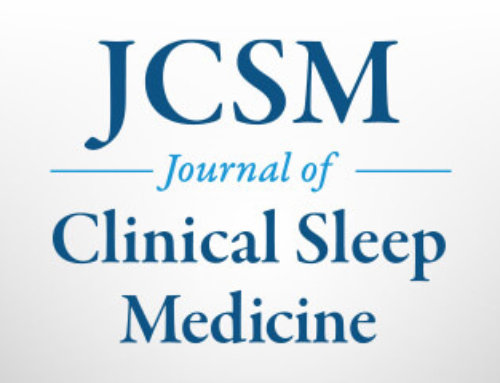FOR IMMEDIATE RELEASE
CONTACT:
Kathleen McCann
(708) 492-0930, ext. 9316
WESTCHESTER, Ill. – A study in the July 1 issue of the journal Sleep provides visual evidence of the severe structural damage that occurs in numerous regions of the brain in people with obstructive sleep apnea (OSA).
Results show that OSA patients have extensive alterations in “white matter,” nerve tissue in the brain containing fibers that are insulated with myelin – a white, fatty sheath. These structural changes appear both in brain regions that have functional importance for characteristics such as mood, memory and cardiovascular regulation; and in fiber pathways interconnecting these regions.
“Showing that the fibers are damaged means that many areas that work together to make one feel happy, to adjust blood pressure correctly to circumstances, and to remember properly can affect each other,” said principal investigator Ronald Harper, PhD, distinguished professor of neurobiology at the David Geffen School of Medicine at UCLA. “That possibility, that we are now contending with an entire system of structures that serve memory, mood, and blood pressure, rather than individual structures, was surprising.”
The study involved 41 patients with moderate to severe OSA and 69 control subjects matched by age. Diffusion tensor imaging (DTI), a older modality of magnetic resonance imaging (MRI), was performed to analyze the microstructure of the brain tissue. From this data, fractional anisotropy (FA) was derived to measure fiber integrity, resulting in a whole brain FA “map.”
Study subjects with OSA had lower FA in multiple areas of the brain including regions of the cerebellum, the thalamus and the prefrontal cortex. According to the authors, lower FA primarily represents damage, shrinking or loss of myelin in groups of axons – nerve fibers that transmit impulses away from the body of nerve cells. Such damage may affect the function of these brain regions, while similar changes to the fiber pathways may compromise the relaying of information between regions.
The authors speculate that at least some of these changes result from the fluctuation of oxygen levels caused by pauses in breathing during OSA. In this study the subjects with OSA averaged 15 to 101 partial or complete pauses in breathing per hour of sleep during one night of monitoring at the UCLA Sleep Disorders Laboratory. Blood flow in the brain is reduced during these pauses, the authors also note, and high blood pressure is associated with OSA; both of these conditions also create a potential for tissue damage.
In a related study published in the June 27 issue of the journal Neuroscience Letters, the same UCLA research team reported finding that people with sleep apnea also have tissue loss in the mammillary bodies, brain regions that help store memory.
“The findings make it all the more imperative that OSA be treated as soon as possible to prevent further injury,” said Harper. “The long-term effects of OSA are terribly damaging to memory and thinking processes. Moreover, control of blood pressure is heavily impacted by the breathing condition, and if multiple areas, each connected with one another, are affected, regulation of blood pressure will be all the more difficult if OSA continues.”
The authors conclude that the structural changes found in the study probably represent injury that accumulated over time; it is uncertain if these changes are permanent, or if they can be reversed by treating OSA.
“The changes in the brain connections we see with this technique may be to some degree reversible,” said lead author Paul Macey, PhD, an assistant professor in residence in the UCLA School of Nursing and Brain Research Institute. “However, some of the changes are probably due to fibers and cells having died.”
The most common treatment for OSA is continuous positive airway pressure (CPAP), which provides a steady stream of air through a mask that is worn during sleep. This airflow keeps the airway open to prevent pauses in breathing and restore normal oxygen levels.
According to the American Academy of Sleep Medicine, most people with OSA snore loudly and frequently, with periods of silence when airflow is reduced or blocked. They then make choking, snorting or gasping sounds when their airway reopens. About 80 percent to 90 percent of adults with OSA remain undiagnosed.
Sleep is the official journal of the Associated Professional Sleep Societies, LLC, a joint venture of the American Academy of Sleep Medicine and the Sleep Research Society.
A media fact sheet about obstructive sleep apnea is available from the AASM at https://www.aasm.org/resources/FactSheets/SleepApnea.pdf. Information from the AASM for patients and the public is available about OSA at http://www.sleepeducation.com/Disorder.aspx?id=7 and about CPAP at http://www.sleepeducation.com/CPAPCentral/.
For a copy of the study, “Brain Structural Changes in Obstructive Sleep Apnea,” or to arrange an interview with an AASM spokesperson, please contact Kathleen McCann, AASM director of communications, at (708) 492-0930, ext. 9316, or kmccann@aasm.org.
###




